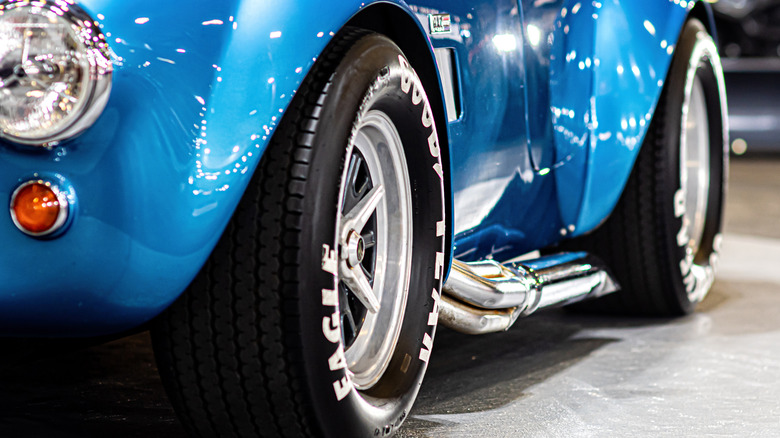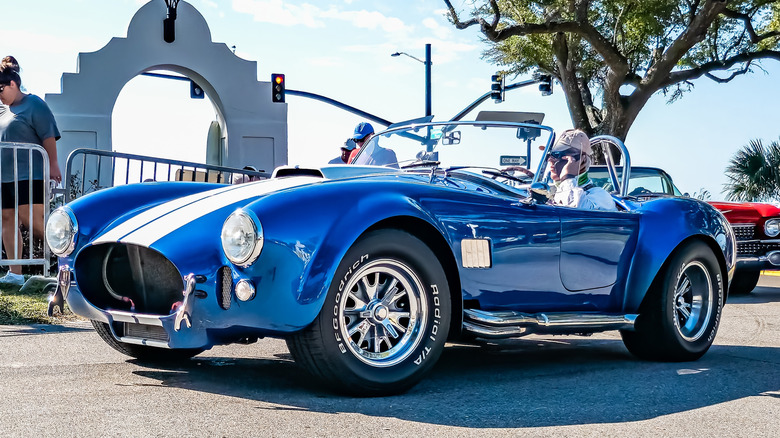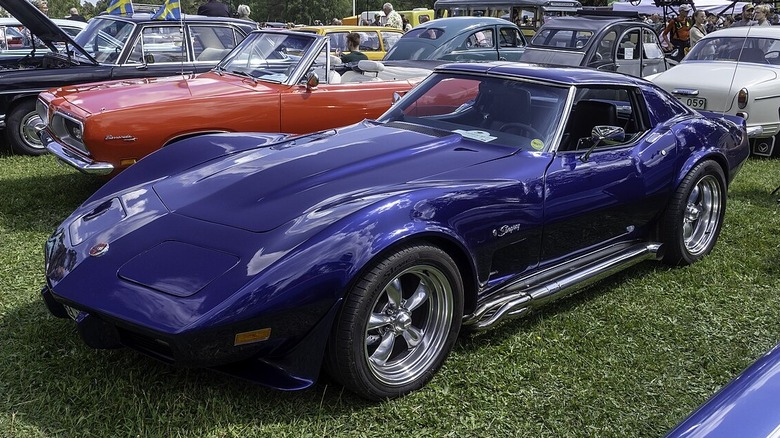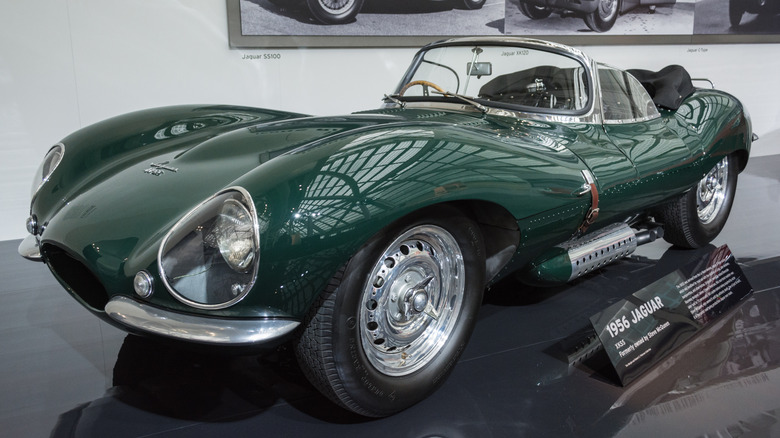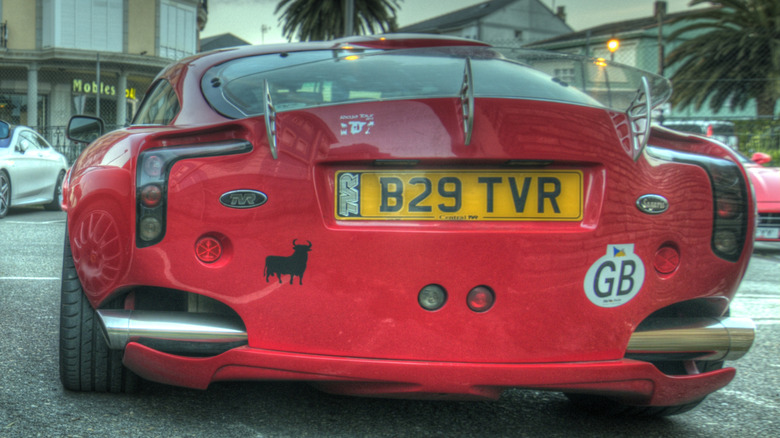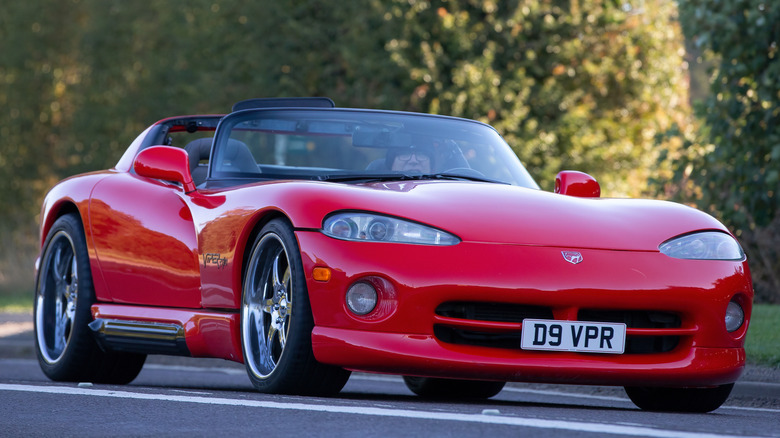5 Of The Coolest Classic Cars With Side Pipes
When you see a car with side pipes, you probably immediately think of their power and performance — and that visual appeal and aggressive aesthetic is actually a big part of the reason they are there. But side pipes, also referred to as exhaust pipes, have a few important functions as well. Side pipes are often utilized by cars that have no space left under the hood, working as headers and mufflers. Side pipes can also improve rear suspension by allowing more space and can shift the weight of the vehicle forward, improving handling at faster speeds.
While there are functional reasons for side pipes to exist, most car enthusiasts love seeing side pipes because they just look damn awesome, especially on older muscle cars. Here are four classic cars that have been ingrained in our memories thanks to their factory-installed, dramatic (and often hot) side pipes that evoke power, speed, and intensity.
Shelby 427 Cobra
Carroll Shelby's iconic Shelby 427 Cobra is one of the most recognizable side-piped vehicles to ever exist. The entire sports car has an incredible design, with its curvy, streamlined shape, large and prominent headlights, and classy interior. However, it's what is under the hood that has captivated car enthusiasts to this day — a large V8 engine generating 800 horsepower, quite a lot for a car weighing around 2,400 pounds. Being such a small car, there's not much room in the engine bay for more than that massive V8, which is why it has its headers and other components in plain sight.
While it may be for practical reasons, the side pipes are part of what has made the 427 Cobra one of the most visually appealing classic cars out there. Carroll Shelby's Cobra from his personal collection went to auction a few years ago, resulting in a $5.94 million sale.
Chevrolet Corvette Stingray
The Corvette Stingray sported side pipes on and off in the 1960s, giving it a powerful appearance and a much better sound to go along with the visuals. While the 1969 Stingray mainly had side pipes to act as a much-needed muffler, there's no denying that they gave it a stylish look that cemented the '60s Stingray in pop culture. Elvis Presley could be seen driving a red Stingray in the opening scene of 1967's "Clambake." Well, maybe use the term "driving" loosely.
Chevy had been designing cars with side pipes since 1959 when they appeared on the futuristic XP-87 concept car, but the Stingray was the first time they appeared on a production vehicle, bringing us to 1965 — same year they added the V8. The earlier side pipes weren't as useful, and the 1968 Corvette appeared without them. Then, the side pipes returned a year later with new and improved muffling.
Jaguar XKSS
The Jaguar XKSS is a rare sight, but it's one you'll always remember thanks to its sci-fi inspired, round shape, aggressively large fenders, and prominent side pipes. The side pipes have a ventilated heat shield that only add to the car's over-the-top aesthetic, although they served an important function due to the side pipes spitting fire. The Jaguar XKSS is the street legal variation of the D-Type, but it was no slouch itself — the top speed was 150 miles per hour, reaching 60 mph in under six seconds, thanks to its 3.4-liter 6-cylinder engine and light weight.
You might have a hard time spotting a Jaguar XKSS, however. Back in 1957, only 16 were produced. Jaguar originally planned to sell 25, but nine were lost in a factory fire. Steve McQueen owned one of the 16, which he called "The Green Rat." He kept his beloved car until he died in 1980.
TVR Sagaris
The TVR Sagaris will have you thinking, "What the hell am I even looking at?" This was a limited production car that debuted in 2005 — only 211 were built, and you'll be hard pressed to find any for sale today — although Classic's most recent sale was nearly $106,000. The TVR Sagaris featured rear-wheel drive, a mid-engine straight-six producing 406 horsepower, and no traction control or anti-lock braking. The top speed of the TRV Sagaris is an eye-watering 185 miles per hour.
Adding to the madness was two side pipes that were placed in the rear, looking as if they were bursting out of both sides of the bumper. These pipes were known to burn anyone who got too close, and made enough noise to irritate even far-off onlookers. Nobody was safe — which is why the TVR Sagaris lost the iconic side pipes in later versions, even if there's no real fun in that.
Dodge Viper
The Dodge Viper has evolved to have quite the reputation. Called the "Widowmaker" due to the amount of accidents that have happened with inexperienced or overconfident drivers, the Dodge Viper has remained an iconic sports car since its inception in the 1990s. While many people may picture the newer Vipers with their long front ends and aerodynamic angles, the first original Dodge Viper was also a sight in its own way. The extremely simplistic '90s Viper had no side windows, no traction control, and no anti-lock brakes — but it did have side pipe exhaust.
The OG Viper featured an 8-liter V10 that produced 400 horsepower, and basically took up the entirety of the engine bay space under its hood. Because it couldn't even fit an air conditioning unit, the Viper was fitted with side pipes that were partially hidden and extremely hot. As if the Viper wasn't dangerous enough.
